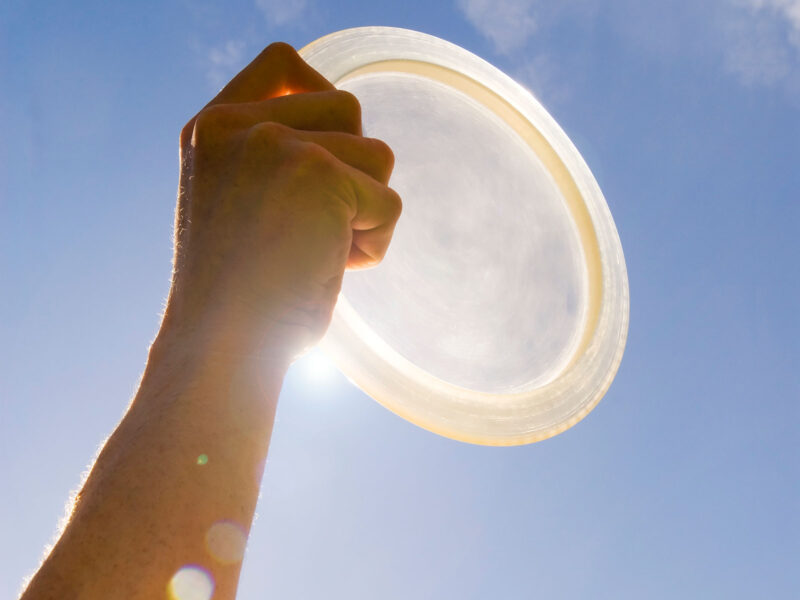
Why Flight Numbers Are A Better Marketing Tool Than Thrower’s Guide
As a long-time player and dealer of discs, some of which I’ve had a hand in designing myself (Helios), I often get asked “what would you say the flight numbers are for that disc?” At that point my mind sets adrift in search of a correct answer. I usually end up giving a hybrid evaluation based on industry staples (e.g., Innova Teebird) and some general qualifiers based on what I think the person asking will get out of the disc in question.
Don’t get me wrong. I see value in the flight numbering system. But, like nearly every simplified description of something technically complex, like disc flight, the system serves as little more than a general and subjective guide. Even more so, it serves to help manufacturers sell discs. Here is why…
Early Flight Numbers
This isn’t a historical account, but I believe the first numbers I saw on golf discs were by Discraft in the mid-late 90’s with the release of the XL, then the XS and X2. I was a big fan of the Z-XL, which had a “stability 1.5” embossed on top of the flight plate along with an arrow suggesting a gentle righty backhand hyzer flight. “That’s helpful” I thought at the time and subsequently bought the Z-X2 thinking its “2” stability rating would make it better into a headwind than my awesome yet kind of flippy XL, and it was!
Five years or so later , Innova released their flight number system. It has become the standard adopted by nearly all disc manufacturers, including Discraft though they added the four-numbered system to their one-number system. To review, the four-numbered system consists of speed (1 to 14), glide (1 to 7), turn (+1 to -5), fade (0 to 5).
So what’s the issue?
I’ve already said I’ve found the numbering system useful for some of my first disc purchases. But to me, that’s where its usefulness just about ends – disc marketing. By the early 2000s, Innova and Discraft, being the notable manufacturers of that time, had already built extensive disc line-ups. This also brought into question where room existed for new additions. The numbering system was a nice concise way for the consumer to draw their own conclusions on how a new disc would fill a gap in their arsenal.
All too often though, the system has led to false expectations of a disc, particularly for new players. For the most part, that expectation concerns distance potential addressed by more speed and glide.
I’ve also heard players often speak of “disc consistency” as it relets to stability. A presumption seems to exist that less high speed turn, or equal amounts of turn and fade, adds predictability. Too often the result is an intermediate player, at best, with a high speed or too stable disc they couldn’t possibly throw straight let alone manipulate or throw more than 200 feet. This is no way to discover the unique joys of our great sport!
Flight Numbers – Speed!
As I see it (but I’m no physicist), disc speed is the product of two main things: wing shape and, by far most important, the force applied to it, in other words arm-speed.
Everyone should agree that highest speed discs have the longest wing allowed by the PDGA which intuitively makes sense. However, a speed 14 disc thrown by Eagle McMahon is not going to fly at the same speed as the same disc thrown by Joe Recreational or even the local course hero. Most agree on this too.
But here’s the hitch, actual disc speed is the determining factor of all the other flight numbers. In other words, a speed 14 disc at 70 mph won’t turn and fade the same as when it’s thrown at 50 mph and anything in between. Therefore, flight characteristics entirely depend on who’s throwing the disc! This brings up the question: what does the actual speed of the throw need to be to agree with the numbers on the disc?
Flight Numbers – Glide
To me, glide is the most confounding flight quality the number system attempts to describe. Is it not a factor of disc shape and spin?
From what I’ve seen on the course and at the field, which includes Christian Sandstrom annihilating DX Valkyries 200 m at the 2003 World Disc Games, glide is as key to big distance as disc speed. Like speed, glide depends on disc shape but less on wing length and more on wing profile in reducing drag combined with the space available for air held under the disc.
But like force required to achieve high speed, I venture that glide is dependent on rotation applied to the disc when thrown. Regardless of the glide number assigned to any disc, without some “Z’s”, the difference in flight between various models is negligible. Think about lobbing your discs without any spin and how their flights compare – not too remarkable.
Of course, like speed, disc spin and therefore glide, changes throughout the flight. Spin must be greatest immediately following the point of release and gradually decreasing until the point where the disc comes to rest. So at what point during the flight is the glide number, or any number for that matter, representing?.
Mother Nature’s Touch
Of course, there are all the environmental factors to consider also. It’s not by accident that serious distance contests happen in the desert at high elevation. There the atmospheric pressure is low, reducing drag, and thermals radiating off hardpan assists in the disc’s glide.
And of course there is the almighty wind factor to consider. When combined with the right disc angle, wind can assist glide far beyond the realm represented by flight numbers. Which begs the question, if flight numbers represent flight potential rather than capacity of a thrower, under what conditions is that potential being estimated? Are we talking no wind at sea-level and 20 degrees Celsius or hurricane force – who knows?
Disc Variability
There are also variables of the disc model itself to consider. Experienced players know that rarely are any two runs of a particular model the same, especially with high-speed drivers. On top of that, with tree hits etc., a disc changes to varying degrees and doesn’t even need to show a lot of wear to do so. Maybe it’s due to a breakdown of plastic rigidity affecting the way air travels across the wing making it less streamline and therefore stable. Regardless, it’s commonly understood that flight characteristics of a disc change with time and so would the numbers describing it. Do flight numbers represent flight of a brand new disc or a disc that’s broken in to some degree?
To be continued…
